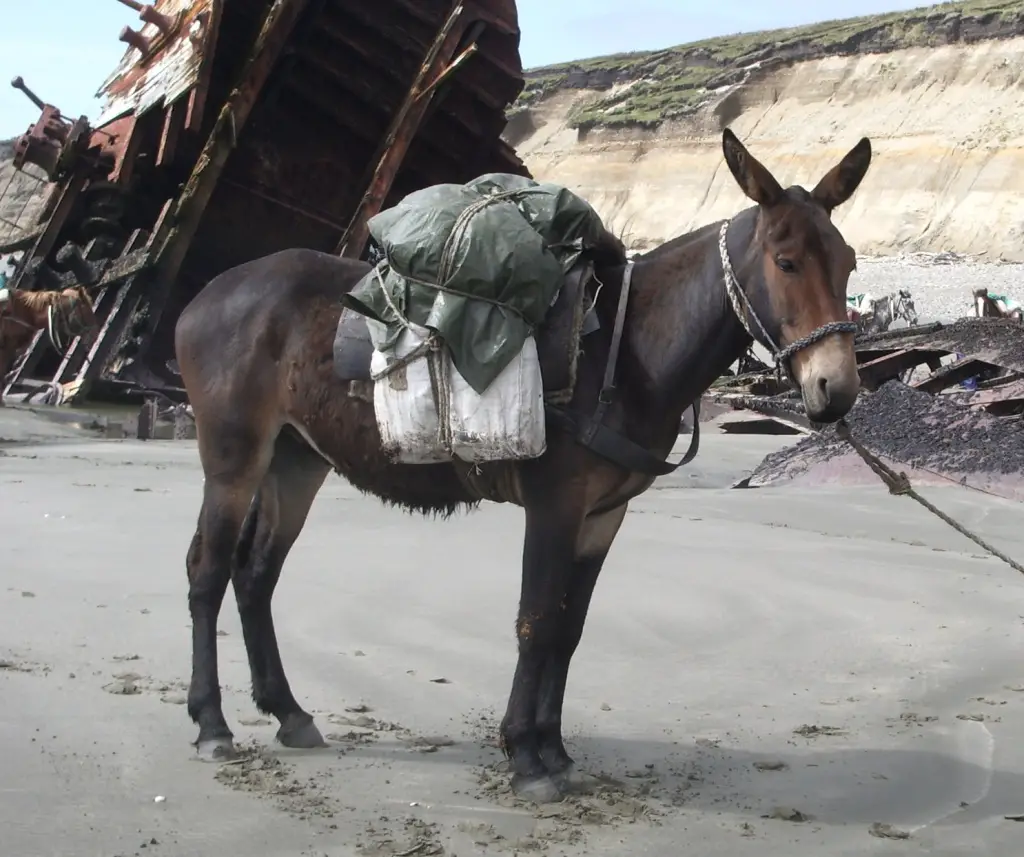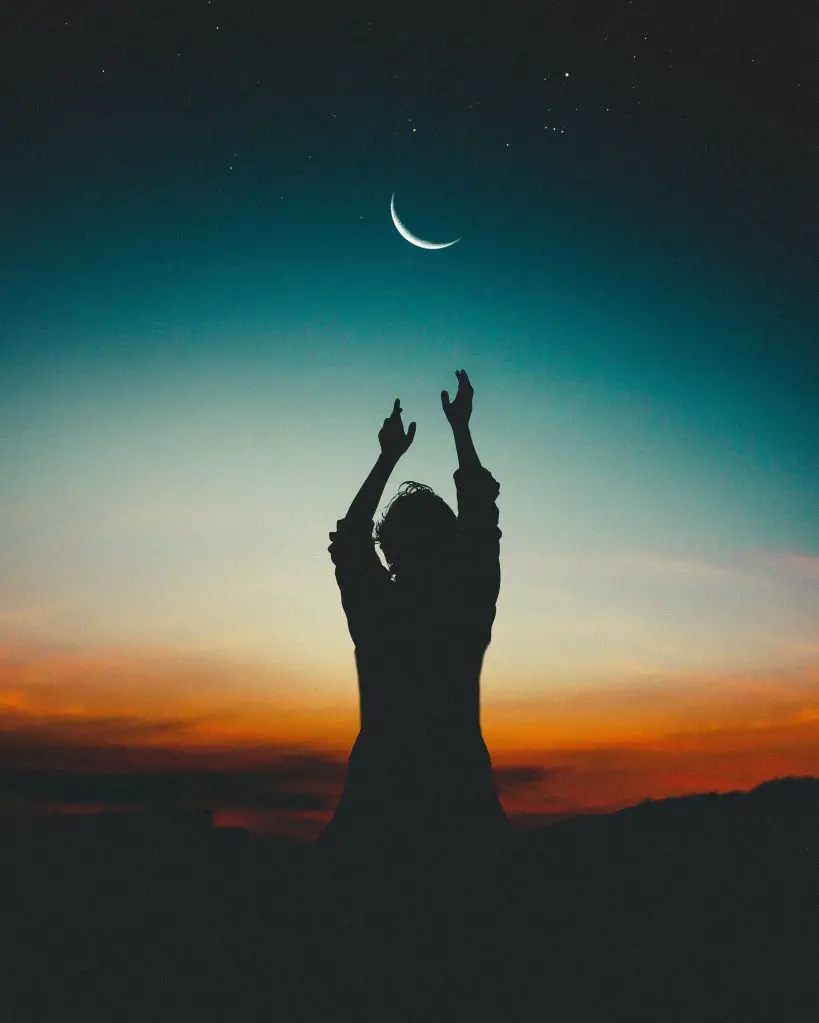Their Eyes Were Watching God: Mule Symbol

What does the yellow mule symbolize? What is the significance of the mule in Their Eyes Were Watching God? (p. 51-75; Chapter 6).
Janie despises working at the store, only looking forward to the entertaining stories and chats of the people sitting on the porch. Matt Bonner and his yellow mule are constantly teased, and the men on the porch mock how Matt abuses the mule as a work-horse. Jody disapproves of Janie listening and associating herself with them, and also demands her to wear a head-rag to hide her beautiful hair from other men. Distressed of Jody’s treatment, she identifies herself with the poor yellow mule and later one day outspokenly disapproves of the mule’s treatment.
To impress Janie, Jody then buys the mule and is praised by the town. The liberated mule later dies and, and a funeral occurs, where Jody refuses to let Janie attend. Throughout her seven years of marriage, Janie begins to resent Jody’s oppression and then later defends Mrs. Tony and women, who face hierarchical oppression by men.
The abused yellow mule symbolizes mistreatment and suppression that Janie and women like her face. The mule is constantly mocked and seen as a lowly creature. Similarly, on the hierarchy of society, Janie and her fellow black women are depicted on the lowest rungs of society. The mule’s death eventually becomes a symbol of the strain between Jody and Janie’s relationship and Janie’s realization for the first time of her resentment of Jody’s patriarchal presence and assertion of dominance over her yearn for independence and equality.

a) What does Janie feel when she sees the mule made fun of?
Janie feels ashamed and frustrated when she sees the mule made fun of. She suddenly draws a parallel between herself, the mule, and the African American women in general .
Callous, brutal treatment of the mule reflects the brutal unfair treatment that Janie faces as well. Unlike the other people in the town, Janie is the only one concerned about the fate of the mule, perhaps unconsciously empathizing with the symbolic animal.
“They oughta be ashamed of theyselves! Teasin’ dat poor brute beast lak they is! Done been worked tuh death; done had his disposition ruint wid mistreatment, and now they got tuh finish deveilin’ im tuh death.” And I think her most important sentence is “Wisht Ah had mah way wid ‘em all.”
As an African American woman, Janie recognizes that her voice and perspectives are worth very little, and she is powerless to stop the group of men from taunting; it takes Jody, a powerful male who has authority and offers money for the mule, for them to stop harassing it.
Her monologue is reflective of not only the plight of African American women, but also of African Americans as a group. Despite their technical liberation from the white man, the white men have already wrought havoc. And here is where mentally, she starts to draw a parallel between herself/the archetypal African American woman and the mule.

b) How does she react and how does Janie identify herself with the mule?
The men initiate the teasing of the mule —> the poor brute “has more spirit left than body” (56), but still stubbornly struggles against the beatings of the villagers (just like poor African American women struggle to maintain their dignity when the men confine them to the domestic sphere and suppress their voice) —> “Everybody was having fun at the mule-baiting. All but Janie.” (56) —> Janie sees how the mule us tortures and subconsciously makes a connection between herself and the mule —> it hurts her to watch the scene and she leaves, thinking “they ought be ashamed of themselves, treating that pure beast lak they do” (56) —> Janie feels ashamed and disappointed of her husband and the villagers, and can’t escape a feeling of familiarity —> thinks of the mule “done been worked to death; done had his disposition ruint with mistreatment” (56) and suddenly sees the parallel between herself and the mule, and realizes that just as her 2 husbands were exploiting her and obliging to work in the store, the mule also had to “waist his life and time” (54) on the desires of his master —> looks around herself with a new vision “people ought to have some regard for helpless things. She wanted to fight about it” (57) —> helpless things are all the victim’s of the men’s oppression in a society where women are not given a voice —-> WHICH DEVICES DOES THE AUTHOR USE TO HIGHLIGHT Janie’s feelings? —-> symbolism of Janie’s hair is connected to the leash of the mule —> sequence of Janie’s husbands is similar to the number of the mule’s masters.
Why does Joe buy the mule?
Jody buys the mule not because he is heart-wrenched by the mule’s devastating plight but because he wants to impress Janie. Jody is a man of wealth, but he struggles to display his love adequately-he does not know how to show it properly. Instead, his love is manifested in his purchases, and he buys things with his money to show his love to Janie, who sadly does not understand.

How does Joe exploit the mule even though he makes an appearance of caring for it?
Although Joe initiates in saving the mule by purchasing its freedom from Matt and acts like he cares for its well-being, he continues to exploit the mule like the others. Despite being called the next George Washington and Abraham Lincoln, Joe specifically exploits the mule when it dies. He holds a ceremony where they “mocked everything human in death,” or mocked the mule with a sarcastic eulogy of their most distinguished departed citizen.
What is the parallel between Matt Bonner’s yellow mule and Janie?
Matt Bonner’s yellow mule was constantly working until Jody essentially bought his liberty. Similarly, Janie was a workhorse under her previous husband Logan Killicks until Jody also “bought” or took her away into the new horizon’s adventure. Even under Jody, Janie feels that she is physically oppressed-having to tie up her hair and not talking with other citizens-like the mule is physically deprived to work nonstop. Although they face physical restraint, their spiritual mentality thrives, in which the mule “had more sprite left than body” and thus the parallel in which Janie internally refuses to obey Jody and his dominance.

4) Explain how the incident is significant:
a) How does this relate to Nanny’s saying and Logan Killicks treating Janie as a workhorse?
While the parallel between Matt Bonner’s yellow mule and Janie is emphasized by the author, the connection between the main heroine and the exploited animal does not only serve to convey the unequal relationship between a wife and a husband. Ultimately, this association functions as a microcosm for the greater meaning of the novel – the need of improving the humiliating and helpless role of a black American woman in the society of the 1940s. The obvious comparison between an overworked, maltreated, and yet still stubborn mule reveals the undying hope and persistent independence of the black women, who continued to dream of mutual respect despite the beatings and ultimatums of their husbands.

Their Eyes Were Watching God: theme of the novel and gender roles
Even though Zora Hurston blames the black men for silencing the black women, she views the white man as the underlying cause of their misfortunes. Because the white landlords degrade the African American men, crumple their dignity, and make it impossible for them to express their rage without facing drastic consequences, they motivate quiet hatred. And there is nothing in the world more dangerous than long suppressed emotions that ultimately, as Langston Hughes had foreseen, explode in violence. When these downtrodden men return home, they feel an understandable desire to spill out their malice on someone. And that “someone” is usually the weak woman. Nanny understood that black men’s oppression of women is result of the white’s abasement of African Americans, and said the following to her granddaughter:
Quote 1: “Honey, de white man is de ruler of everything as fur as Ah been able tuh find out. Maybe it’s some place way off in de ocean where de black man is in power, but we don’t know nothin’ but what we see. So de white man throw down de load and tell de nigger man huh pick it up. He pick it up because he have to, but he don’t tote it. He hand it to his womenfolks. De nigger woman is de mule uh de world so fur as Ah can see. Ah been praying’ fun it tuh be different for you. ” (Chapter 1, p.14)

How does the incident relate to Janie’s evolution as a character/connects to how Janie defies the role of a “lady” and the consequences for stepping out?
Remembering the wise words of Nanny after experiencing the oppression of her two husbands, Janie begins to see the ironic connection between the black women and the “mules of the world.” She suddenly realizes that she has the burden of not only being a women, of not only being black, but of being a black American women. The girl senses that she must inevitably face the doubled amount oppression as a result of her social and domestic role. Finally, she steps outside of the chains of society, grows as a character, and expresses the greatest meaning of the novel:
Quote 2: “It’s so easy to make yo’ self out God Almighty when you ain’t got nothin’ tuh strain against but women and chickens.”(Chapter 2, p.75), but it is so hard to stay unprejudiced and kind when one oneself is oppressed and represents a full cup of anger that is ready to spill.
© Copyright 2016 Moosmosis – All rights reserved
All rights reserved. This essay or any portion thereof
may not be reproduced or used in any manner whatsoever
without the express written permission of the publisher.
Please Like our Facebook page to support our open-access youth education initiatives! 🙂
Categories: education, History, Literature, Social Studies















Fantastic and very in-depth analysis!
LikeLiked by 2 people
Thank you Athena! You’re very kind. Their Eyes Were Watching God is a great book, and enjoyed it very much.
LikeLiked by 1 person
You’re welcome 🙂
LikeLiked by 2 people
awesome article!
LikeLiked by 2 people
Thank you Percy!
LikeLiked by 1 person
you’re welcome!
LikeLike
brilliantly written essay on the symbolism of the mule in Their Eyes Were Watching God 🙂
LikeLiked by 1 person
Perfect timing and awesome essay, we just started reading the book in class!
LikeLiked by 2 people
How awesome, Ana! Hope you’re enjoying the book, and thank you for you visiting!
LikeLiked by 1 person
Wow🥰
LikeLiked by 1 person